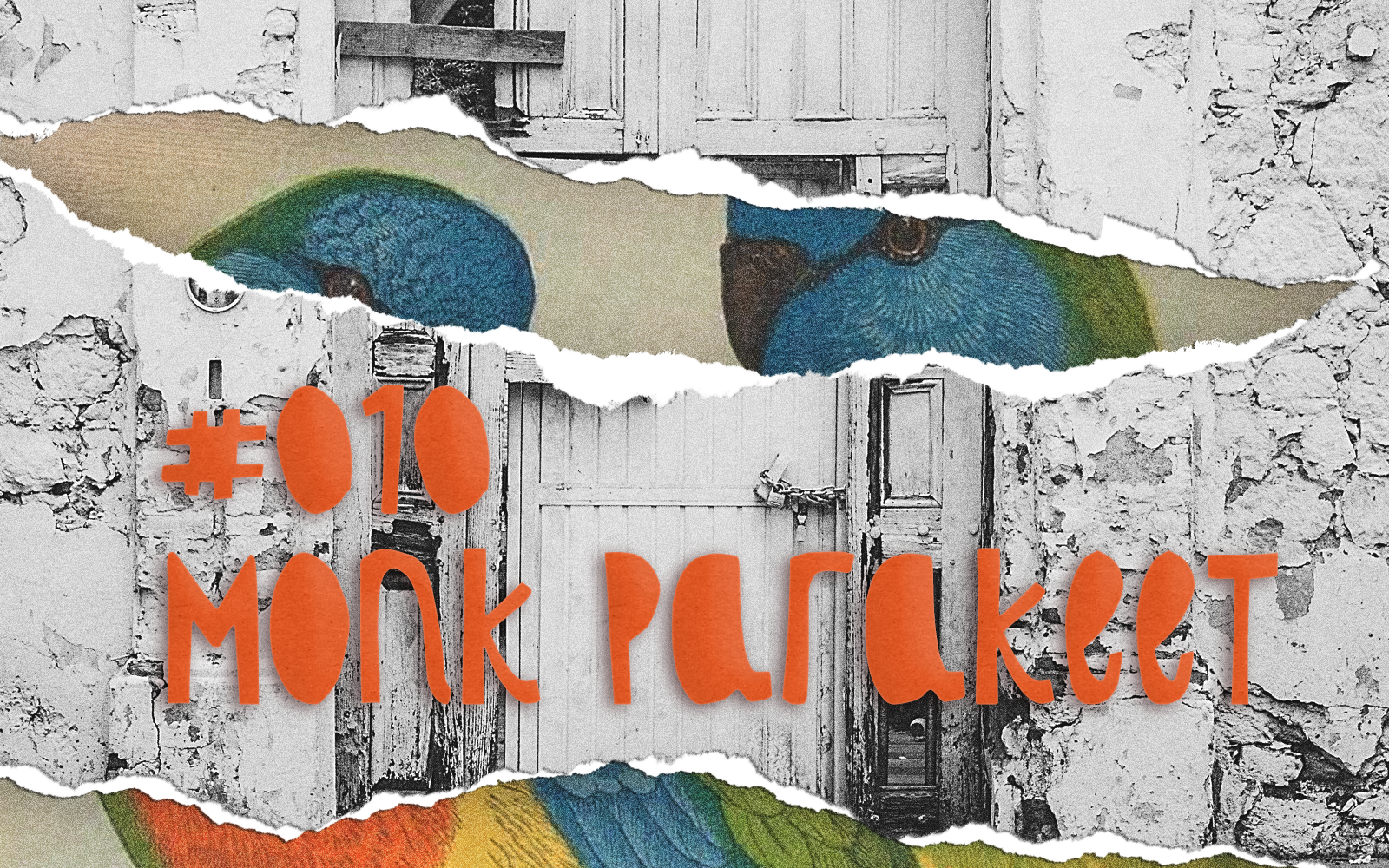Take the monk parakeet.
You know these birds: gifted to you in childhood, bought from super-chain grocery stores from cages full of feeble birds next to stacks of plumbeous fish aquariums.
You got one when you were ten or so, named it Spike (almost: Fireball), a highlighter-green bird that seemed equal parts frightened of its new home and curious about its place there. But it died a week later. You ran to the cage like you did each morning, excited to have it perched on your finger, to pet its elfin head, and there it was, lying on the bottom.
And you know now you weren’t alone—the gamble of having a grocery store-bought pet bird—but what you didn’t learn until much later in life is that they need constant bonding and stimulation, often need a partner in captivity to have any chance at happiness.
Did you know there are wild populations of monk parakeets in the US spawned from feral birds who fled homes across the country or were released by parents tired of tending to their needs? That in Chicago’s Hyde Park, The Escaped are hundreds strong, their collective chape-yees deafening to passers-by?
They are undeniably beautiful, these birds, making a home in unfamiliar terrain. They’ve survived, these fled and forgotten.
Some call them pests. Call them invasive. Yes, they nest in colonies along telephone poles and junction boxes and transformers, a city of monk parakeets, collecting knowledge about the world, finding ways to survive.
They say they’re fire hazards.
They say they’re too noisy, too shrill.
California and Colorado and Connecticut and Georgia and Hawaii and Kentucky and Pennsylvania and Rhode Island and Tennessee and Wyoming have banned them outright, have said: “Here is a bird, a living thing, banned from our borders.”
(And you spend so many sleepless nights imagining birds in wire cages, alone and sad, those big brains spinning, wondering, you’re sure, about the world, their isolation from it, what the point of it all is here, in the deepening night under a draped beach towel.)
(And you do, you do, fight the urge when you’re in the pet store buying dog food to buy the birds, too, to set them free, to let them find their kin and nest and live long, live well with them.)
Monk parakeets can live to be fifteen years old.
They can be taught to talk.
Older children will stay behind to feed the new brood, ensuring their family’s survival.
Imagine that, what they’ve endured, all that has been taken from them. Imagine, across the corrugated-grey skies of Chicago and northwestern Indiana, the endless telephone poles and sagging jump-rope electric wires and drab harbors and train stations and bleak dejection, to see a vibrant, cheerful monk parakeet flying, twirling in the air, finding refuge here, uncompromising in its tenacity, its elation at being alive.
I can’t imagine a more beautiful and belonged thing.
—
Robert James Russell is the author of the novellas Mesilla (Dock Street Press) and Sea of Trees (Winter Goose Publishing), and the chapbook Don’t Ask Me to Spell It Out (WhiskeyPaper Press). He is a founding editor of the literary journals Midwestern Gothic and CHEAP POP. You can find his illustrations and writing at robertjamesrussell.com, or on Twitter/Instagram at @robhollywood.
Artwork by: Robert James Russell
